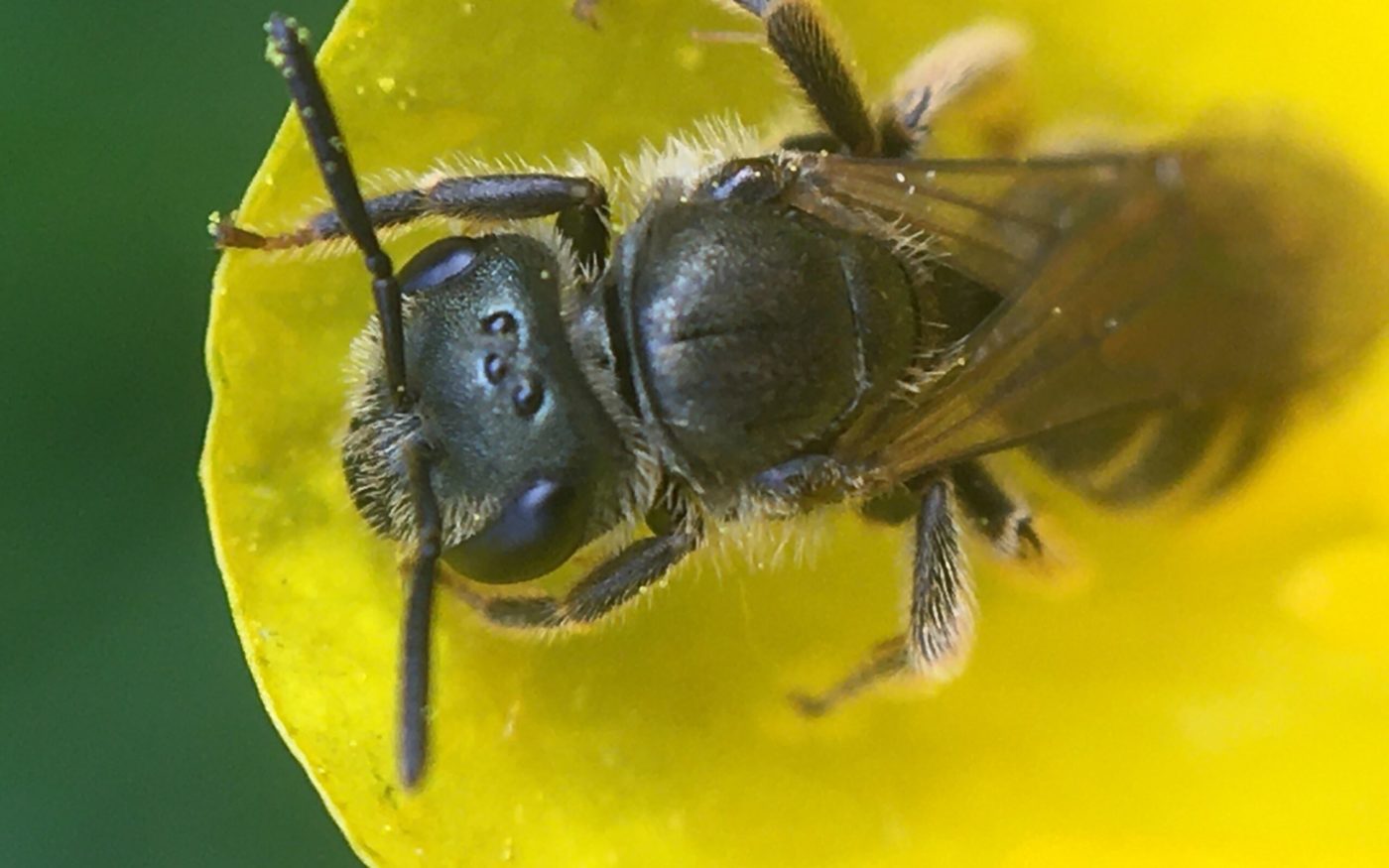Order
Ants, bees, wasps and sawflies
Family
Halictidae
The common furrow bee belongs to the sweat bee genus, also known as Lasioglossum. It is the largest genus of bees, containing over 1700 species in the world, 32 of those live in the UK. They often nest in soils, with some species nesting on their own, and others nesting in groups.
What do they look like?
Males are slender and dark in colour, with an orange – brown colouration on the first half of their abdomen. Their head and thorax are covered in short, light orange hairs, that become lighter on the face and the end of their legs. The males also have longer, thicker antenna. The female is broader, and dark brown, they are covered in short orange hairs, which are particularly visible on their back legs, which are used to collect pollen.
Where do they live?
They can be found in most habitats, but are often found in open, dry areas, as well as gardens.
Where can they be found?
This species can be found throughout the UK, although it is less common in the north.
When can you see them?
Females can be found flying around from mid-March to early October. Males can be seen from late June to late October. This time frame may differ in Northern parts of the UK.
Life cycle
The common furrow bee is mainly eusocial (nests in groups) in the south, in the north it is more likely to be solitary. They build their nests in short turf and other open areas in the sun. When nesting in groups, a nest will be founded by one female. The dominant female will then become the queen, and the others will serve as workers.
When nesting solitarily, a single female will construct the nest, building multiple cells in which she rears small workers (females) with under-developed sexual organs. On occasion, she will rear one or two males as well. These workers will then become the foragers, helping to rear a brood of sexual females and a brood of males.
What do they do?
These bees collect pollen and nectar to feed themselves and their offspring. Whilst doing this, they transport pollen to and from a variety of flowers. This pollenates the plants which is a crucial stage in the plants life cycle.
Did you know?
The different nesting strategies in this species is particularly evident in Japan, where the common furrow bee will nest in groups (eusocial) at lower latitudes, but nest on their own (solitary) at higher latitudes.

